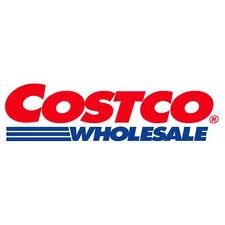Most of us have seen how the advent of online retail giants like Amazon.com, Inc. (NASDAQ:AMZN) and eBay Inc (NASDAQ:EBAY) has taken away a good chunk of market share from traditional brick and mortar retailers. This has led to quarters of weakening sales for huge retailers, who are now focusing on expanding their e-commerce operations. However, Costco Wholesale Corporation (NASDAQ:COST) provided a needed break to continuing retail weakness with excellent third quarter results.
Doing things that matter
Costco Wholesale Corporation (NASDAQ:COST)’s earnings for the third quarter surged 19% to $1.04 per share, beating Street estimates by $0.01. Revenue for the quarter, including membership fees, came in at $24.08 billion, an increase of 7.9% over the prior year period. Same-store sales took the limelight as it grew approximately 5% y-o-y. As we know, same-store sales is a highly important metric for analyzing retailers, and a growth of 5% is very impressive, keeping in mind the challenges traditional retailers are facing. Gross margin improved by 12 basis points to 10.67% compared to same period last year.
More and more members
The company has given its investors, and the retail industry, a number of reasons to rejoice. A biggie among them is an increase of 12% in its membership fees to $531 million compared to last year. A unique thing about Costco is its membership model, which contributes most to its margins as there is minimal additional cost involved against extra revenue. A big kudos goes to Costco for offering a beautiful shopping experience because of its healthy sales culture and customer management principles.
This is the reason it is seeing a continuous boost in membership fees, not just from renewal of memberships, but also from a host of new ones. As per the earnings call, new membership signups were very strong, up 19% y-o-y. The brilliant thing about Costco Wholesale Corporation (NASDAQ:COST)’s management is that it realizes memberships are one of the company’s major strengths, and the company capitalizes wonderfully on this. It has utilized its pricing power strategically by increasing membership fees by $5 and $10 since November 2011.
These increases are strategic because they do not disturb demand (as most of the members do not mind paying these amounts) and also enable the company to offer great deals and bargains. On top of that, membership fees almost wholly contribute to the margins of the company. It has also attracted a diverse bunch of people belonging to different age groups, social classes, and working environments.
Other retailers are still struggling
Retailers like Wal-Mart Stores, Inc. (NYSE:WMT) and Target Corporation (NYSE:TGT) have lost a sizable market share to online retail companies, and are now desperately trying to create strong e-commerce operations. Target recently opened up a new technology office that will exclusively focus on the expansion of e-commerce operations. Its first quarter earnings failed to meet expectations, as earnings dropped to $0.81 per share from $1.03 in the previous year. The adjusted earnings took a hit of 5% and came in at $1.05 per share.
As highlighted in the earnings call, its sales in weather-related categories took a major hit, and as a result the company achieved lower-than-expected sales. As a result of poor performance, management revised its full-year guidance for adjusted EPS in the range of $4.70-$4.90, compared with prior guidance of $4.85-$5.05. Even if we discount tough weather conditions, weakening sales in categories like apparel remains a huge concern for the company.
Wal-Mart is one of the cheaper stocks in the retail industry with a TTM P/E of around 15, compared to Costco Wholesale Corporation (NASDAQ:COST)’s TTM P/E of around 25. Being a massive company, its first quarter results were pretty much in line with expectations. It reported an increase of 4.6% in its earnings on a y-o-y basis and announced expected EPS for the second quarter between $1.22-$1.27, compared to $1.18 last year. Sales for its U.S. business stayed flat, whereas comp sales dipped by 1.4%. As with Target, Wal-Mart also lost out on sales due to crummy weather conditions. Looking at e-commerce operations, Wal-Mart did better than Target and Costco, with a growth of more than 30%.
Final words
As I mentioned above, Costco Wholesale Corporation (NASDAQ:COST) is currently trading at a TTM P/E of around 25, which analysts believe is an overvaluation. However, I do not think that the stock is overvalued. Costco’s business model is built on strong fundamentals that include a fantastic network of members. The membership model is unique to Costco and the company has taken complete advantage of this by providing a beautiful shopping experience. Its strategy of raising the membership fee by small amounts has paid off handsomely, as can be seen in its quarterly results.
Additionally, Costco has been in the right place, even during challenging times. What I mean to say is that it has created huge value for its shareholders during retail’s rough patch. Also, I have a lot of confidence in Costco Wholesale Corporation (NASDAQ:COST)’s management team, which has executed some of the finest strategies for the company. Currently, the management is working on the company’s e-commerce operations, and with e-commerce sales up over 20% in the U.S & Canada, it’s definitely going well.
Hence, I think it makes sense to buy Costco if you are looking for some stability in the retail industry.
The article How Is This Retailer Leading the Race? originally appeared on Fool.com and is written by Mihir Mehta.
Mihir Mehta has no position in any stocks mentioned. The Motley Fool recommends Costco Wholesale (NASDAQ:COST). The Motley Fool owns shares of Costco Wholesale. Mihir is a member of The Motley Fool Blog Network — entries represent the personal opinion of the blogger and are not formally edited.
Copyright © 1995 – 2013 The Motley Fool, LLC. All rights reserved. The Motley Fool has a disclosure policy.





